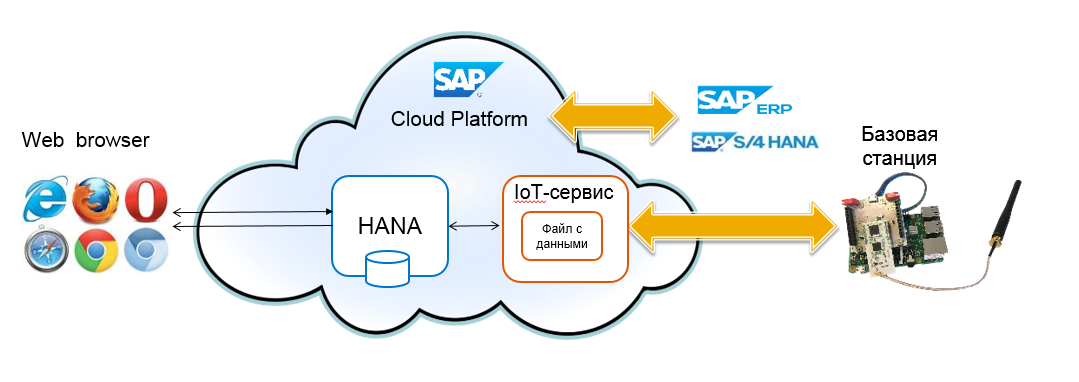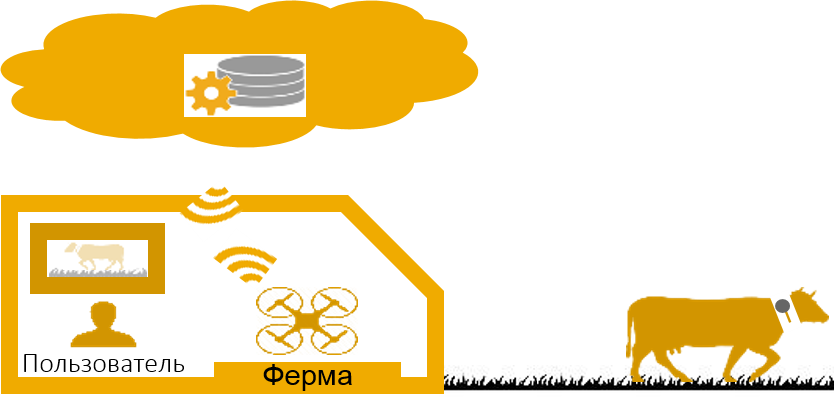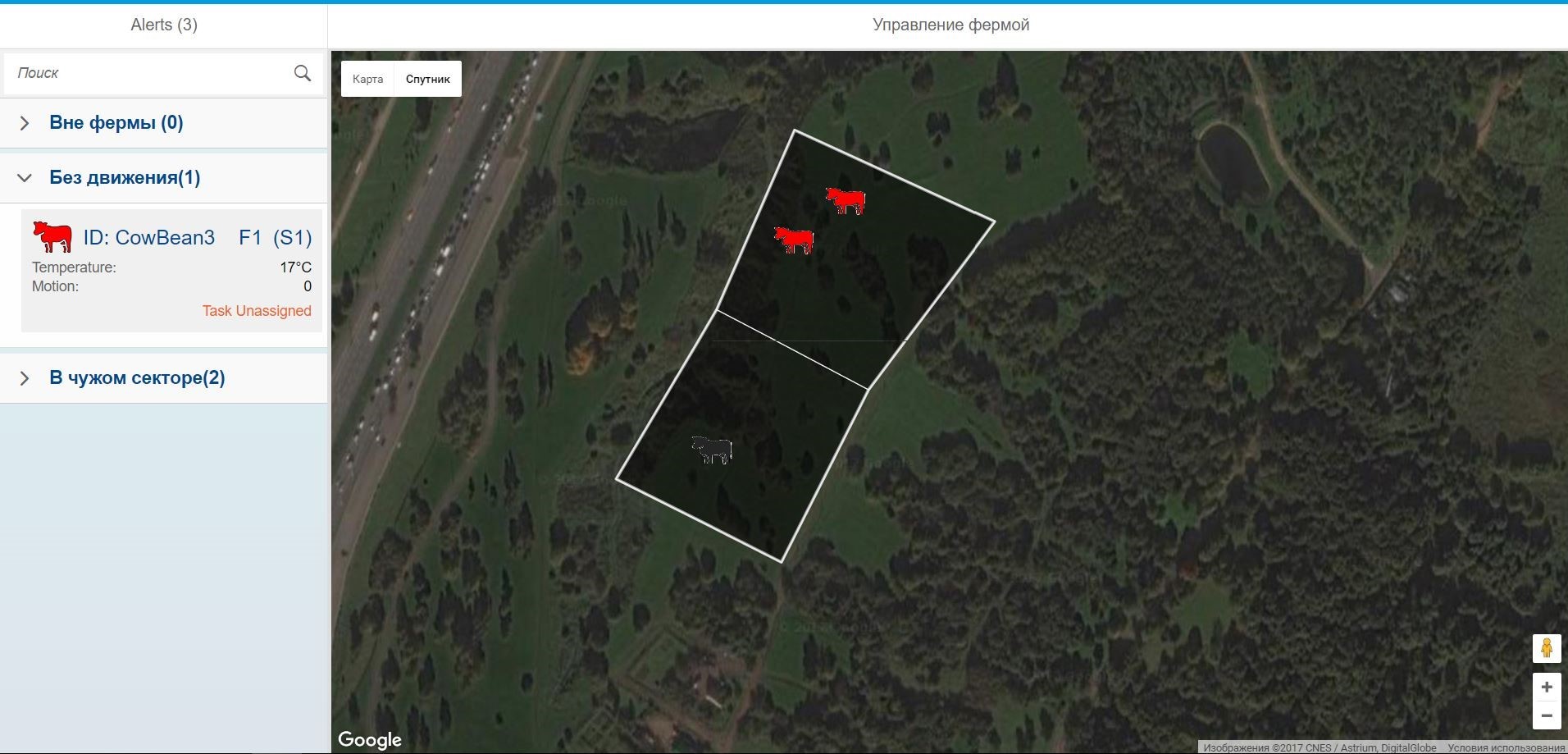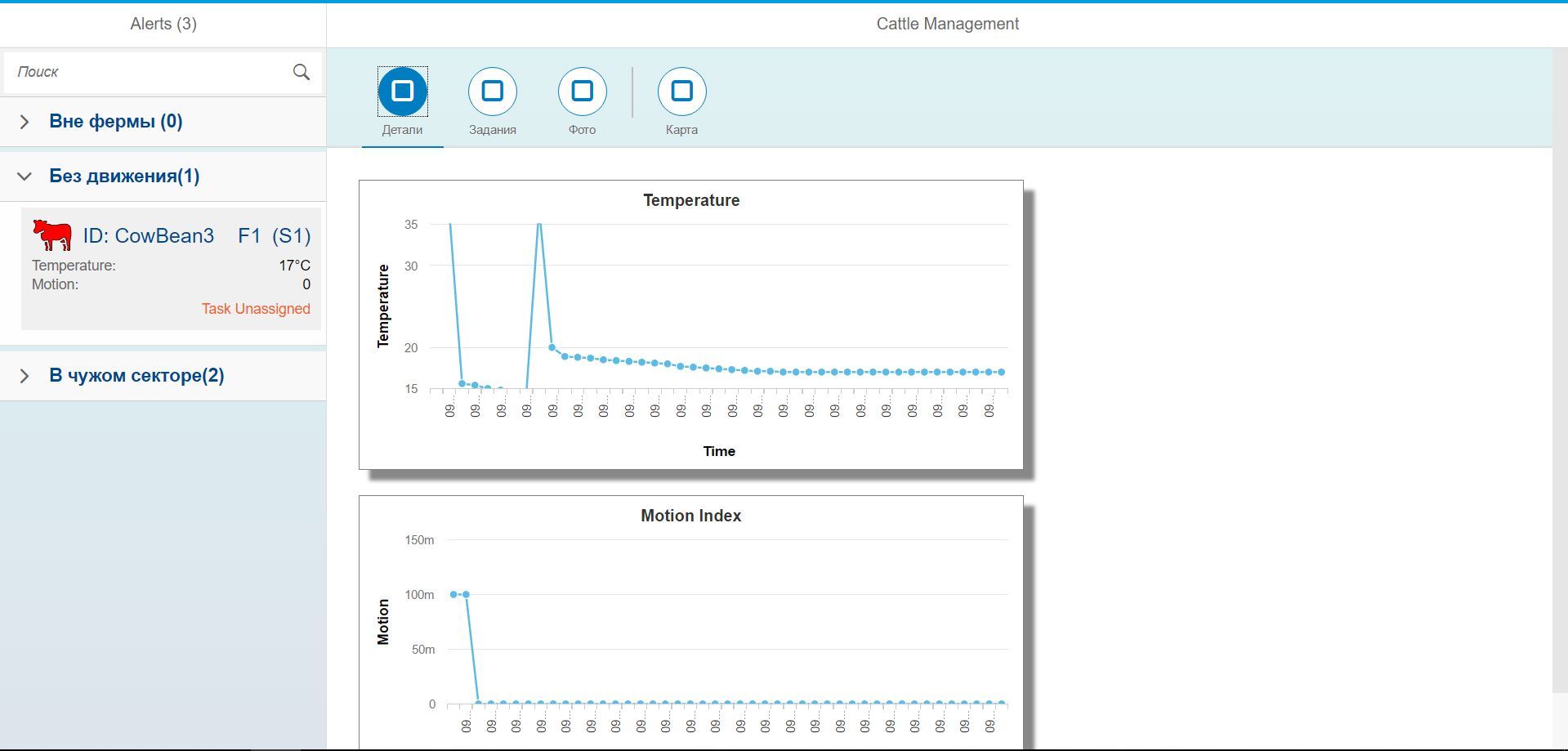Smart Farm with Cowboy Drones using the SAP Cloud Platform
SAP is often perceived as the only developer of ERP systems for managing corporations and industrial enterprises. Meanwhile, the company has long gone beyond the development of enterprise management systems. SAP invests in the direction of R & D and relies on new industries: Internet of things, machine learning, artificial intelligence, robots, augmented and virtual reality and much more.
One of the new scenarios using advanced technologies is a smart farm solution using drones, mobile applications and the SAP Cloud Platform. The system will help employees of agricultural enterprises around the world to monitor a large number of cattle. The authors of this scenario are the employees of the Moscow office of SAP Labs, the brothers Alexander and Oleg the Bulgarians.
In today's post we will talk about how it works.
Why do we need drones-shepherds
Agricultural holdings and livestock farms set several goals: taking into account and increasing the number of animals, controlling pastures and fields, expanding the area for grazing, without increasing staff costs. Therefore, in agriculture, there is an active study and introduction of new technologies for the Internet of things.
')
Suppose one of the largest Russian agricultural holdings plans to place a million animals on ten thousand square kilometers. To collect data from such a huge area, you can hire more employees or find new technological solutions for the Internet of things. In large farms in Russia, it is already common practice to use chips to gather information about how and when animals eat, about their health. The SAP solution helps automate many processes, leaving only control functions to employees.
How does the farm management system based on the SAP Cloud Platform
The system consists of the following hardware parts:
- microcomputer
- GPS, temperature and motion sensors
- LoRa WAN modem and transmitter with a communication range of up to 5 km
- quadcopter (drone)
- SAP Cloud Platform

Sensors are mounted on animals: location (GPS), movement (accelerometer) and temperature. Sensors transmit data using LoRa WAN technology to a microcomputer mounted on a quadcopter.
LoRa WAN is a new technology for data transmission, which has proved its effectiveness in a long-range network (from 1 to 30 km) with wireless sensors for animals. Sensor sets using LoRa WAN can be networked up to 1000 devices.
The drone is used as a base station for receiving a data signal, because large pastures do not have cellular or any other type of communication. He flies over the herd and collects data from the "wards", then returns "to the base", where information from the sensors is loaded for processing in the SAP Cloud Platform.


According to the developers, now the cost of 1 sensor is about $ 25, but prices are constantly decreasing. Built-in batteries allow you to transfer data throughout the life of a cow - about three years. Drones also take photos of pasture and animals. The resulting images are used to calculate the NDVI index and determine the state of green vegetation on pastures.
The data obtained from the sensors allow conclusions to be drawn about the state of health of the animal. Recent studies have shown that accelerometer indicators can recognize up to nine different diseases in cattle. A temperature sensor helps detect a dead or diseased animal and eliminate a possible source of infection for the rest of the herd. Comparison of GPS and thermometer data allows you to find injured or trapped animals.
How the software works in the farm management system
When the drone returns to the farm with the collected data, all readings and photos are uploaded to the SAP Cloud Platform. Household staff can immediately begin to analyze the information received, develop a plan for further action or make a forecast.
In the system under the working title "Farm Management" there are several modes to monitor the herd. In this article we will show some of them.

Identification of animals leaving their sector for grazing
The first image shows a screen for special incident alerts. With its help, livestock specialists will be able to spot animals that have fled to the “alien” sector for grazing, determine the cadastral numbers of animals, their physical condition and send a task to the operator, who will return the “runaway” cows to the correct sector.

Assignment of task for operator
The data from the sensors also allow you to see in real time the diseased animal, promptly make a decision to isolate it from the rest of the herd and send the task to the veterinarian.

Checking the condition of the animal using information received from sensors
Employees of livestock enterprises can receive information about the herd and make management decisions both on a computer and in the format of a mobile application for a smartphone or tablet.
The authors of the prototype are SAP employees, brothers Alexander and Oleg Bulgarins. They work for SAP Globalization Services, a global development division that adapts software for use in different countries.
One of the new scenarios using advanced technologies is a smart farm solution using drones, mobile applications and the SAP Cloud Platform. The system will help employees of agricultural enterprises around the world to monitor a large number of cattle. The authors of this scenario are the employees of the Moscow office of SAP Labs, the brothers Alexander and Oleg the Bulgarians.
In today's post we will talk about how it works.
Why do we need drones-shepherds
Agricultural holdings and livestock farms set several goals: taking into account and increasing the number of animals, controlling pastures and fields, expanding the area for grazing, without increasing staff costs. Therefore, in agriculture, there is an active study and introduction of new technologies for the Internet of things.
')
Suppose one of the largest Russian agricultural holdings plans to place a million animals on ten thousand square kilometers. To collect data from such a huge area, you can hire more employees or find new technological solutions for the Internet of things. In large farms in Russia, it is already common practice to use chips to gather information about how and when animals eat, about their health. The SAP solution helps automate many processes, leaving only control functions to employees.
How does the farm management system based on the SAP Cloud Platform
The system consists of the following hardware parts:
- microcomputer
- GPS, temperature and motion sensors
- LoRa WAN modem and transmitter with a communication range of up to 5 km
- quadcopter (drone)
- SAP Cloud Platform

Sensors are mounted on animals: location (GPS), movement (accelerometer) and temperature. Sensors transmit data using LoRa WAN technology to a microcomputer mounted on a quadcopter.
LoRa WAN is a new technology for data transmission, which has proved its effectiveness in a long-range network (from 1 to 30 km) with wireless sensors for animals. Sensor sets using LoRa WAN can be networked up to 1000 devices.
The drone is used as a base station for receiving a data signal, because large pastures do not have cellular or any other type of communication. He flies over the herd and collects data from the "wards", then returns "to the base", where information from the sensors is loaded for processing in the SAP Cloud Platform.


According to the developers, now the cost of 1 sensor is about $ 25, but prices are constantly decreasing. Built-in batteries allow you to transfer data throughout the life of a cow - about three years. Drones also take photos of pasture and animals. The resulting images are used to calculate the NDVI index and determine the state of green vegetation on pastures.
The data obtained from the sensors allow conclusions to be drawn about the state of health of the animal. Recent studies have shown that accelerometer indicators can recognize up to nine different diseases in cattle. A temperature sensor helps detect a dead or diseased animal and eliminate a possible source of infection for the rest of the herd. Comparison of GPS and thermometer data allows you to find injured or trapped animals.
How the software works in the farm management system
When the drone returns to the farm with the collected data, all readings and photos are uploaded to the SAP Cloud Platform. Household staff can immediately begin to analyze the information received, develop a plan for further action or make a forecast.
In the system under the working title "Farm Management" there are several modes to monitor the herd. In this article we will show some of them.
Identification of animals leaving their sector for grazing
The first image shows a screen for special incident alerts. With its help, livestock specialists will be able to spot animals that have fled to the “alien” sector for grazing, determine the cadastral numbers of animals, their physical condition and send a task to the operator, who will return the “runaway” cows to the correct sector.
Assignment of task for operator
The data from the sensors also allow you to see in real time the diseased animal, promptly make a decision to isolate it from the rest of the herd and send the task to the veterinarian.
Checking the condition of the animal using information received from sensors
Employees of livestock enterprises can receive information about the herd and make management decisions both on a computer and in the format of a mobile application for a smartphone or tablet.
The authors of the prototype are SAP employees, brothers Alexander and Oleg Bulgarins. They work for SAP Globalization Services, a global development division that adapts software for use in different countries.
Source: https://habr.com/ru/post/325122/
All Articles